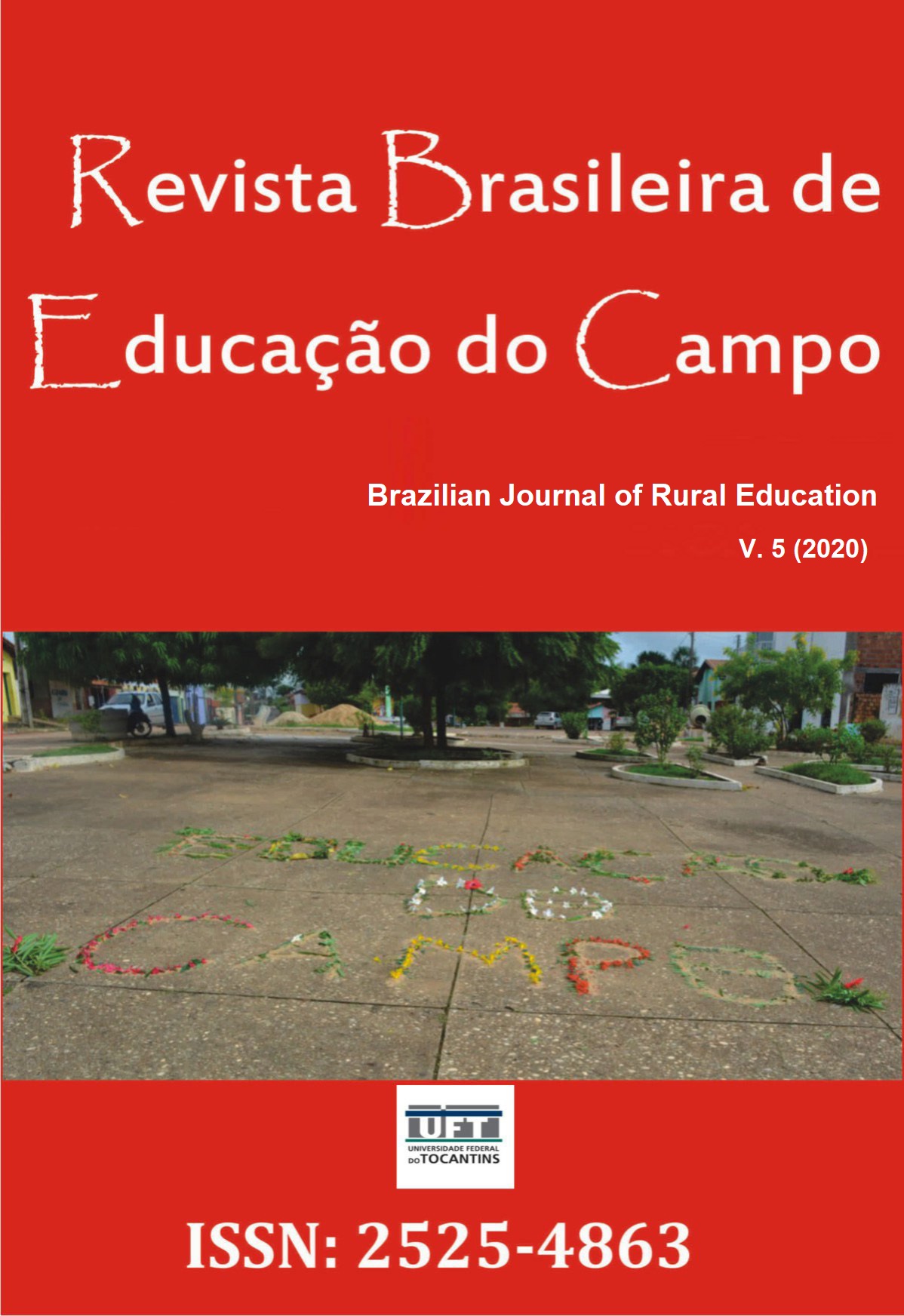To be not to be a participatory document of/in the project Urban Boundaries
DOI:
https://doi.org/10.20873/uft.rbec.e8857Schlagworte:
participatory documentary; critical ethnography; relational creativity; ethics of responsibility and reconnectionAbstract
Abstract. We present the documentary produced in the ethnographic research project "Urban Boundaries: the dynamics of cultural encounters in Community Education" (FU), in which two local communities of Costa da Caparica, Portugal - a fishing community and a multicultural community in a clandestine neighborhood - and an interdisciplinary academic community, comprising researchers from university and non-university institutions, as well as independent academics and artists. Critical ethnography was the methodology adopted in the project, by which the active participation of all social actors is reinforced, implicated in a process of intentional change. In the documentary produced throughout the project we assume the heterogeneity of languages, genres, times, voices and sensibilities, in a process of creative freedom and permanent reflexivity. We write a brief history of the process of its realization and production / edition, in order to reflect critically on some options that we have identified around several interpenetrating questions: 1) epistemological and methodological issues; 2) political issues; 3) ethical issues; 4) aesthetic and technical issues. Based on critical and emancipatory perspective, as a philosophical and epistemological foundation, where all knowledge has an equal place, guided by an ethics of responsibility and re-connection and by a poetics and policy of democratic participation and decentralized multiplicity, we were concerned with creating a production with technical and aesthetic qualities, integrating diverse forms and discourses, crossing heterogeneous, scientific, political and artistic logics. Finally, we identify clues for future work, thus assuming an open process that is constantly rethinking, critically analyzing its limits and expanding into new possibilities.
Downloads
Literaturhinweise
Bairon, S. A. (2007). Linguagem hipermediática como produção do conhecimento: relações interdisciplinares. In Bairon, S., & Ribeiro, J. S. (Orgs.). Antropologia visual e hipermédia (pp.43-60). Porto: Edições Afrontamento.
Benjamin, W. (1992). Sobre a arte, técnica, linguagem e política. Lisboa: Relógio d’Água Editores.
Black, G. F., Davies, A., Iskander, D., & Chambers, M. (2018). Reflections on the ethics of participatory visual methods to engage communities in global health research, Global Bioethics, 29(1), 22-38, https://dx.doi.org/10.1080/11287462.2017.1415722
Caetano, A. P., & Afonso, J. C. (2014). Trans-inter-multiculturalidade. A poesia como lugar de mediação. In Mesquita, M. (Org.). Fronteiras Urbanas – Ensaios sobre a humanização do Espaço (pp. 45-67). Viseu: Anonymage.
Caetano, A. P. (2017). Ética y complejidades en la mediación comunitaria. Devenir. Revista de Estudios culturales e Regionales, 32, 41-58.
Cole, A. (2007). A arte do documentário: notas sobre o audiovisual, a antropologia visual e o processo de criação. In Bairon, S., & Ribeiro, J. S. (Orgs.). Antropologia visual e hipermédia (pp. 109-121). Porto: Edições Afrontamento.
Fronteiras Urbanas (FU) (2014). Documentário Fronteiras Urbanas. Produção ANONYMAGE. Viseu: Anonymage. http://fronteirasurbanas.ie.ul.pt/?p=825
Gérin-Lajoie, D. (2009). A aplicação da Etnografia Crítica nas Relações de Poder, Revista Lusófona de Educação, 14, 13-27. http://recil.ulusofona.pt/handle/10437/1768
Lacan, J. (1975). Encore: Le seminaire. livre XX. Paris: Seuil.
Lobo, J. (2008). Uma certa tendência do documentário brasileiro contemporâneo (Usos e abusos do estudo da comunidade, como método, e das entrevistas, como técnica de pesquisa). Palavra Clave, 11(1), 53-59. https://www.redalyc.org/pdf/649/64911105.pdf
Manpaso, A. (2010). La fortuna: por siempre y para siempre, a cross-generational and participatory documentar. Encounters on Education, 11, 25-34. https://doi.org/10.24908/eoe-ese-rse.v11i0.2409
Mesquita, M. (2016). Urban Boundaries Space. Disturbing choices and the place of the critical research/researcher in the capitalist wile. In Straehler-Pohl, H., Bohlmann, N., & Pais, A. (Eds.). The Disorder of Mathematics Education. Challenging the Socio-Political Dimensions of Research (pp. 307-320) New York: Springer. https://doi.org/10.1007/978-3-319-34006-7_18
Martins, H. (2013). Sobre o lugar e os usos das imagens na antropologia: notas críticas em tempos de audiovisualização do mundo. Etnográfica, 17(2), 395-419. https://doi.org/10.4000/etnografica.3168
Menezes, L. M. (2013). A realidade construída pela produção documental participativa. Galaxia, 26, 227-238. https://doi.org/10.1590/S1982-25532013000300018
Morin, E. (2005). O Método 6: Ética. Lisboa: Publicações Europa-América.
Nichols, B. (2010). Introduction to documentary (2nd Edition). Bloomington. Indiana: Indiana University Press. http://skola.restarted.hr/wp-content/uploads/2014/06/Bill-Nichols-Introduction-to-documentary.pdf
Nichols, B. (2016). Speaking Truths with Film: Evidence, Ethics, Politics in Documentary. Oakland: University of California Press.
Palmer, D., & Caldas, B. (2017). Critical Ethnography. In King, K., Lai, Y. J., & May, S. (Eds.). Research Methods in Language and Education. Encyclopedia of Language and Education (3rd ed.). Cham: Springer. https://doi.org/10.1007/978-3-319-02249-9_28
Rancière, J. (2010). O espetador emancipado. Lisboa: Orfeu Negro. 2010.
Ribeiro, J. (2007). Antropologia visual e hipermedia. In Bairon, S., & Ribeiro, J. S. (Orgs.). Antropologia visual e hipermédia, (pp. 13-30). Porto: Edições Afrontamento.
Rouch, J. (2010). Meditação de um explorador solitário. In Cinemateca Portuguesa. Museu do Cinema. Lisboa: Cinemateca Portuguesa. Museu do Cinema.
Shaw, J. (2012). Using participatory video for action research: negotiating the space between social process and research product. London: Open University Press.
Stam, R. (2000). Film theory. An introduction. Oxford: Blackwell Publishers.
Stille, S. (2011). Framing representations: Documentary filmmaking as participatory approach to research inquiry. Journal of Curriculum and Pedagogy, 8, 101-108. https://doi.org/10.1080/15505170.2011.624922
Thomas, J. (1993). Doing Critical Ethnography. California: Sage. https://dx.doi.org/10.4135/9781412983945
Veröffentlicht
Zitationsvorschlag
Ausgabe
Rubrik
Lizenz
Creative Commons Attribution License
Creative Commons Attribution License
Proposal for Copyright Notice Creative Commons
1. Policy Proposal to Open Access Journals
Authors who publish with this journal agree to the following terms:
A. Authors retain copyright and grant the journal right of first publication with the work simultaneously licensed under the Creative Commons Attribution License that allows sharing the work with recognition of its initial publication in this journal.
B. Authors are able to take on additional contracts separately, non-exclusive distribution of the version of the paper published in this journal (ex .: publish in institutional repository or as a book), with an acknowledgment of its initial publication in this journal.
C. Authors are permitted and encouraged to post their work online (eg .: in institutional repositories or on their website) at any point before or during the editorial process, as it can lead to productive exchanges, as well as increase the impact and the citation of published work (See the Effect of Open Access).














